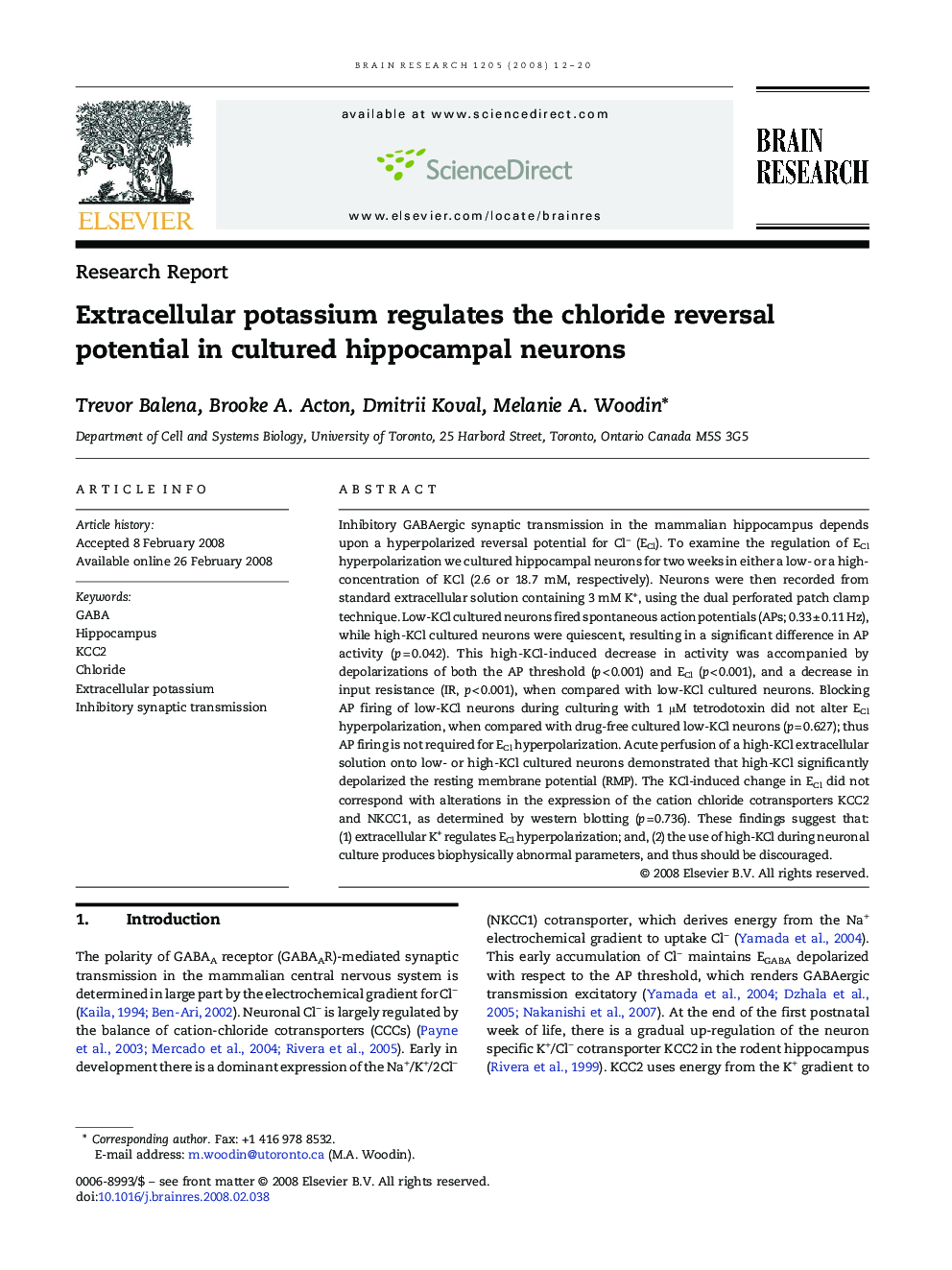| Article ID | Journal | Published Year | Pages | File Type |
|---|---|---|---|---|
| 4329801 | Brain Research | 2008 | 9 Pages |
Inhibitory GABAergic synaptic transmission in the mammalian hippocampus depends upon a hyperpolarized reversal potential for Cl− (ECl). To examine the regulation of ECl hyperpolarization we cultured hippocampal neurons for two weeks in either a low- or a high-concentration of KCl (2.6 or 18.7 mM, respectively). Neurons were then recorded from standard extracellular solution containing 3 mM K+, using the dual perforated patch clamp technique. Low-KCl cultured neurons fired spontaneous action potentials (APs; 0.33 ± 0.11 Hz), while high-KCl cultured neurons were quiescent, resulting in a significant difference in AP activity (p = 0.042). This high-KCl-induced decrease in activity was accompanied by depolarizations of both the AP threshold (p < 0.001) and ECl (p < 0.001), and a decrease in input resistance (IR, p < 0.001), when compared with low-KCl cultured neurons. Blocking AP firing of low-KCl neurons during culturing with 1 μM tetrodotoxin did not alter ECl hyperpolarization, when compared with drug-free cultured low-KCl neurons (p = 0.627); thus AP firing is not required for ECl hyperpolarization. Acute perfusion of a high-KCl extracellular solution onto low- or high-KCl cultured neurons demonstrated that high-KCl significantly depolarized the resting membrane potential (RMP). The KCl-induced change in ECl did not correspond with alterations in the expression of the cation chloride cotransporters KCC2 and NKCC1, as determined by western blotting (p = 0.736). These findings suggest that: (1) extracellular K+ regulates ECl hyperpolarization; and, (2) the use of high-KCl during neuronal culture produces biophysically abnormal parameters, and thus should be discouraged.
